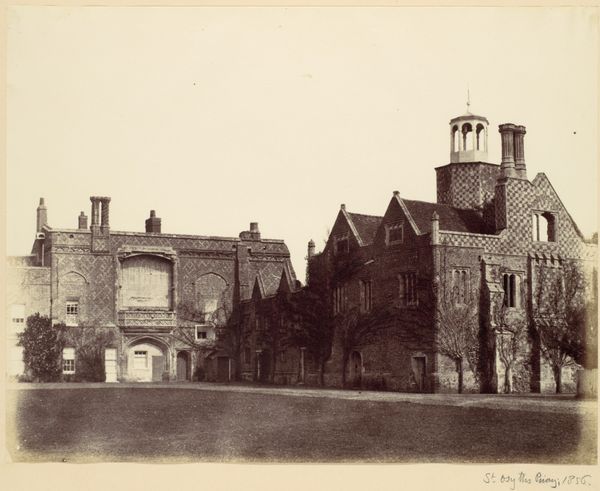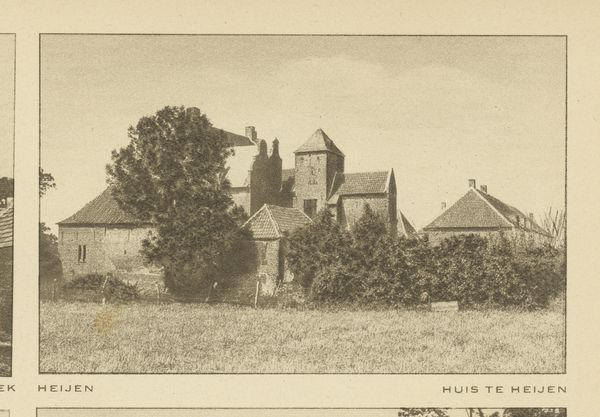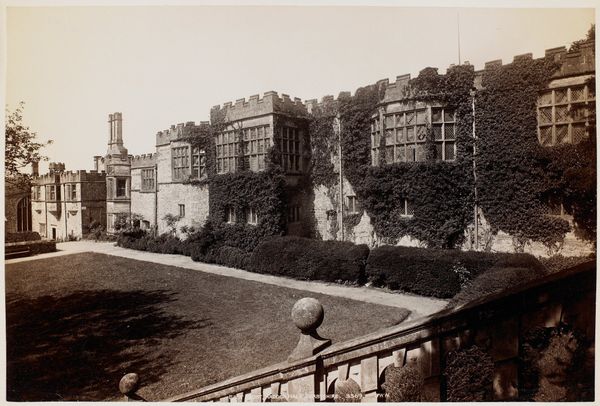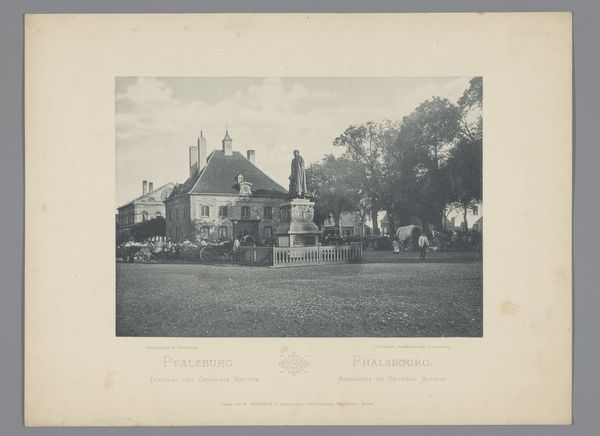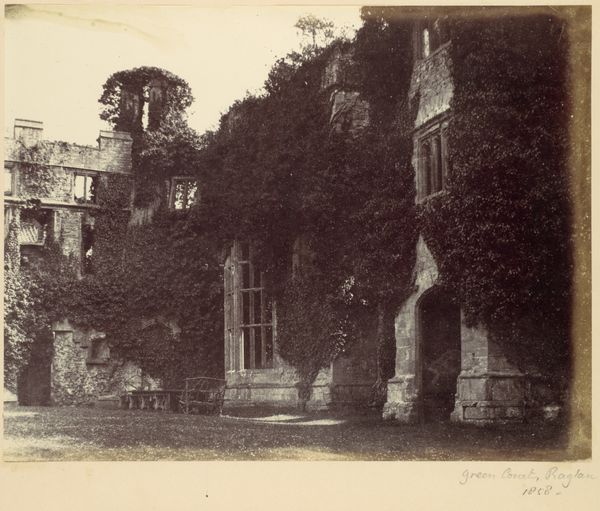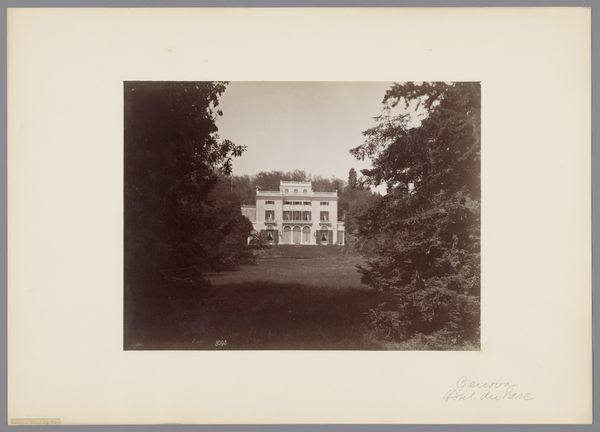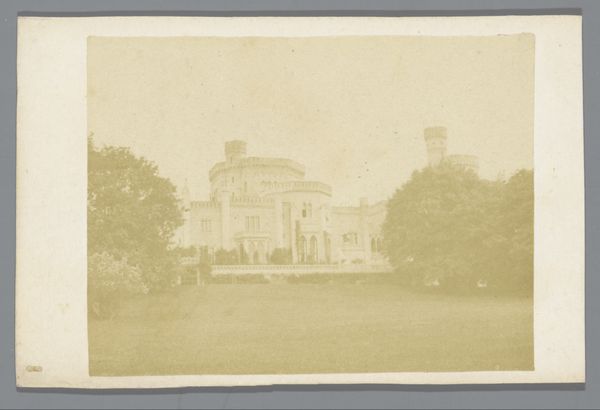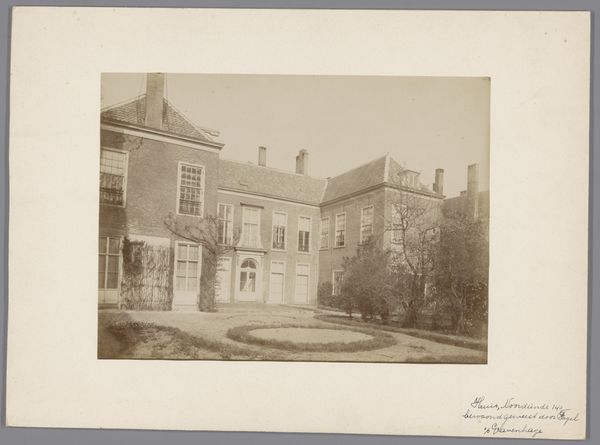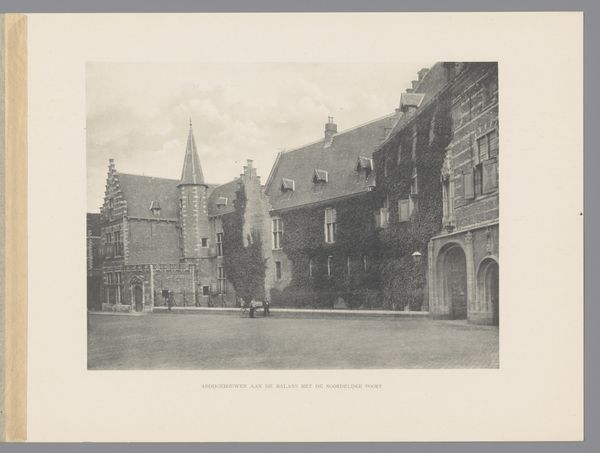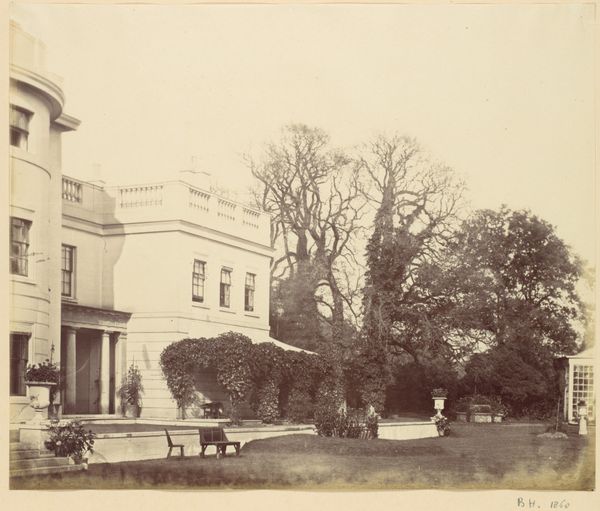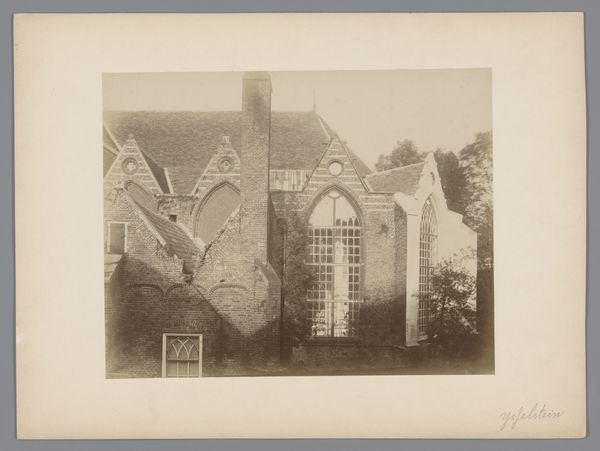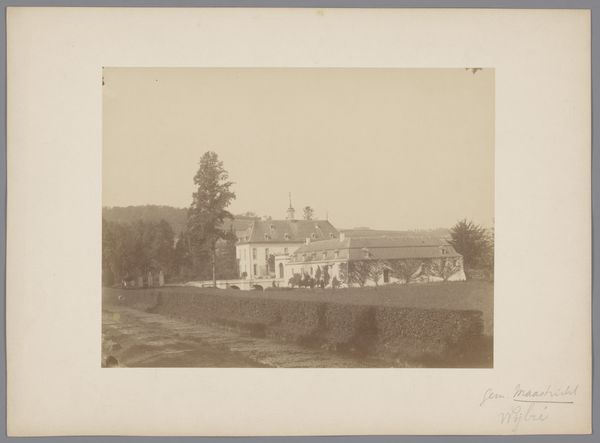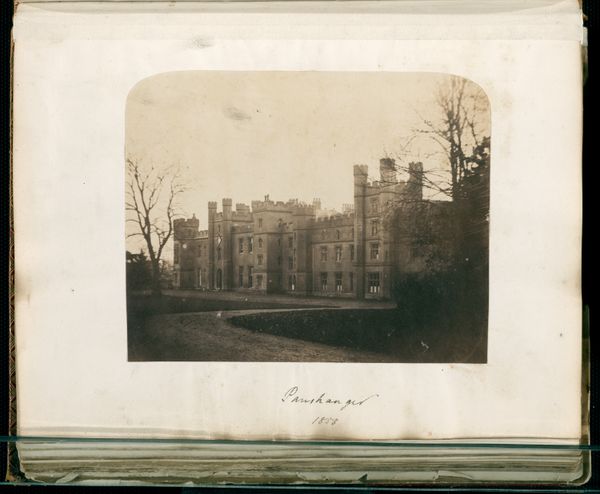
photography, gelatin-silver-print
#
16_19th-century
#
pictorialism
#
landscape
#
photography
#
gelatin-silver-print
#
monochrome photography
#
naturalism
Dimensions: 12.9 × 17.2 cm (image); 15.3 × 19.1 cm (paper); 24.6 × 32 cm (album page)
Copyright: Public Domain
Editor: This is "The Old Rye House," a gelatin silver print from around the 1880s by Peter Henry Emerson, currently at the Art Institute of Chicago. I’m really drawn to how serene yet stark it is. What stands out to you in this photograph? Curator: What I see is a conscious crafting of photographic meaning through specific technical processes and their material outcomes. Emerson, in his pursuit of "naturalism," employed techniques such as selective focusing, manipulating the gelatin silver print to mimic the soft focus of human vision. He wasn’t merely capturing reality, but actively constructing a particular version of it through the darkroom process, which should make us question the means of its production. How does Emerson’s manipulated process relate to labor and social structures of his time, in your view? Editor: That’s interesting. So you’re suggesting that by blurring the lines between artistic intervention and documentation, he's also blurring the lines about how we think of art in relation to everyday life? I guess I had initially interpreted the softness as a neutral aesthetic choice rather than an active construction. Curator: Precisely. Furthermore, the gelatin silver printing process itself speaks volumes about industrial advancements and the democratisation of art. This process made photography more accessible, potentially shifting the role of photography in both art and society. Consider the social implications of increased image production and dissemination at this moment. Editor: So it is no longer the domain of painting which takes much longer. Curator: The transition of labor is also key, along with access and consumption within the culture. Emerson chose his tools and his subjects, shaping our understanding of rural England through both. How might we see that in light of evolving social hierarchies? Editor: Wow, I hadn’t considered how the materiality of the print is actually critical to understanding its context and meaning. I see this in a totally different light now! Thanks. Curator: Indeed. Analyzing the materiality can provide unique perspectives into historical context.
Comments
No comments
Be the first to comment and join the conversation on the ultimate creative platform.
